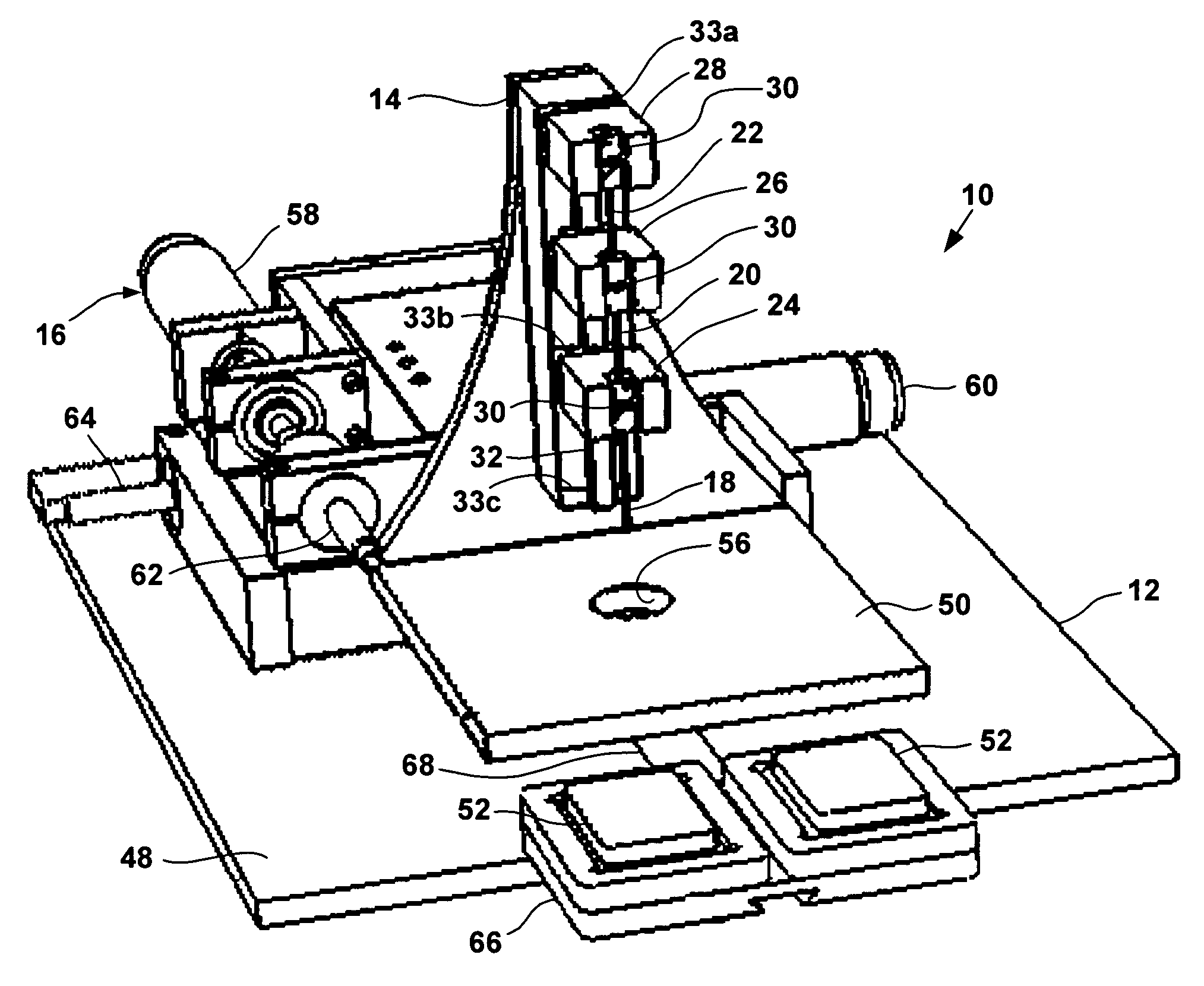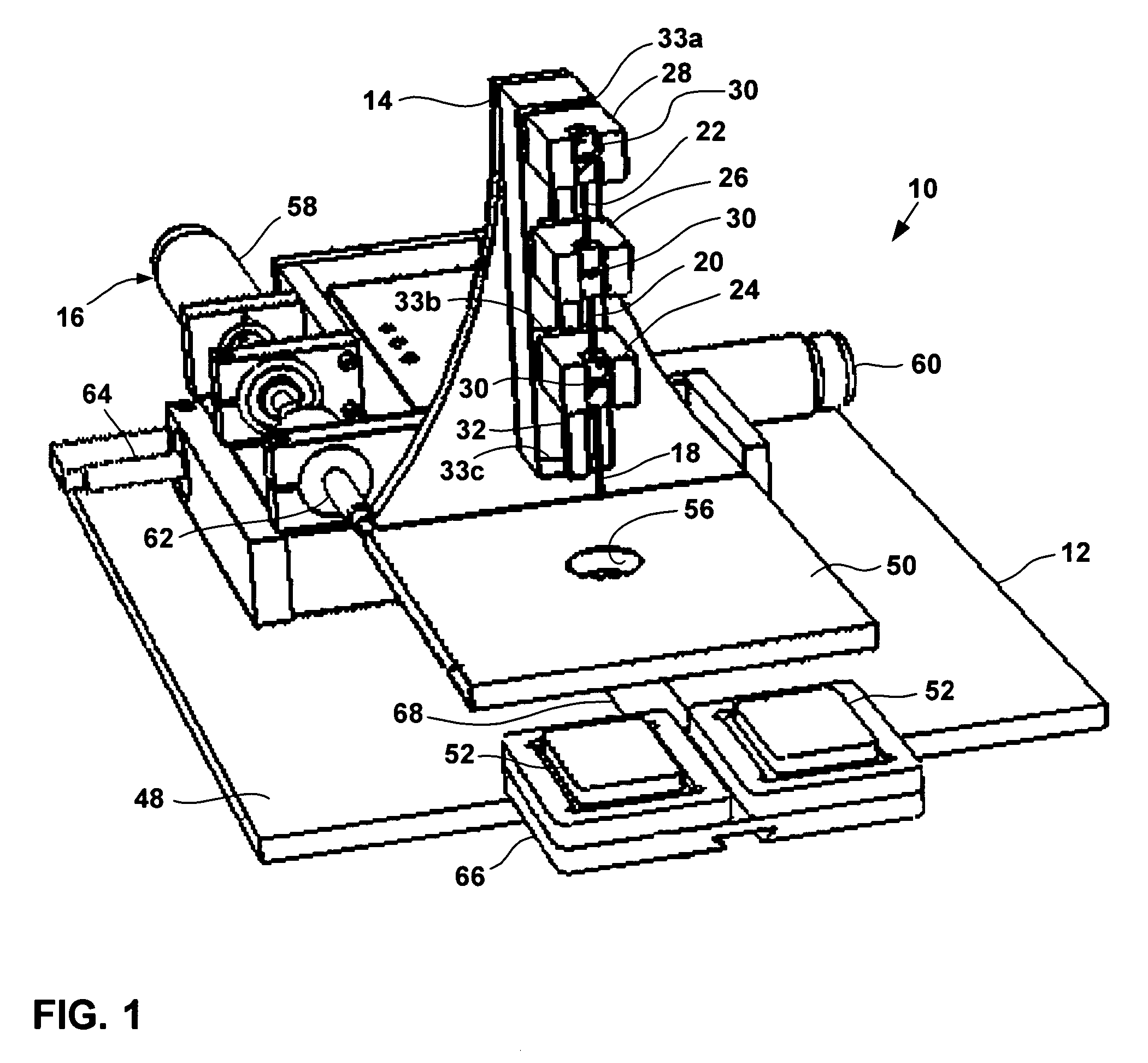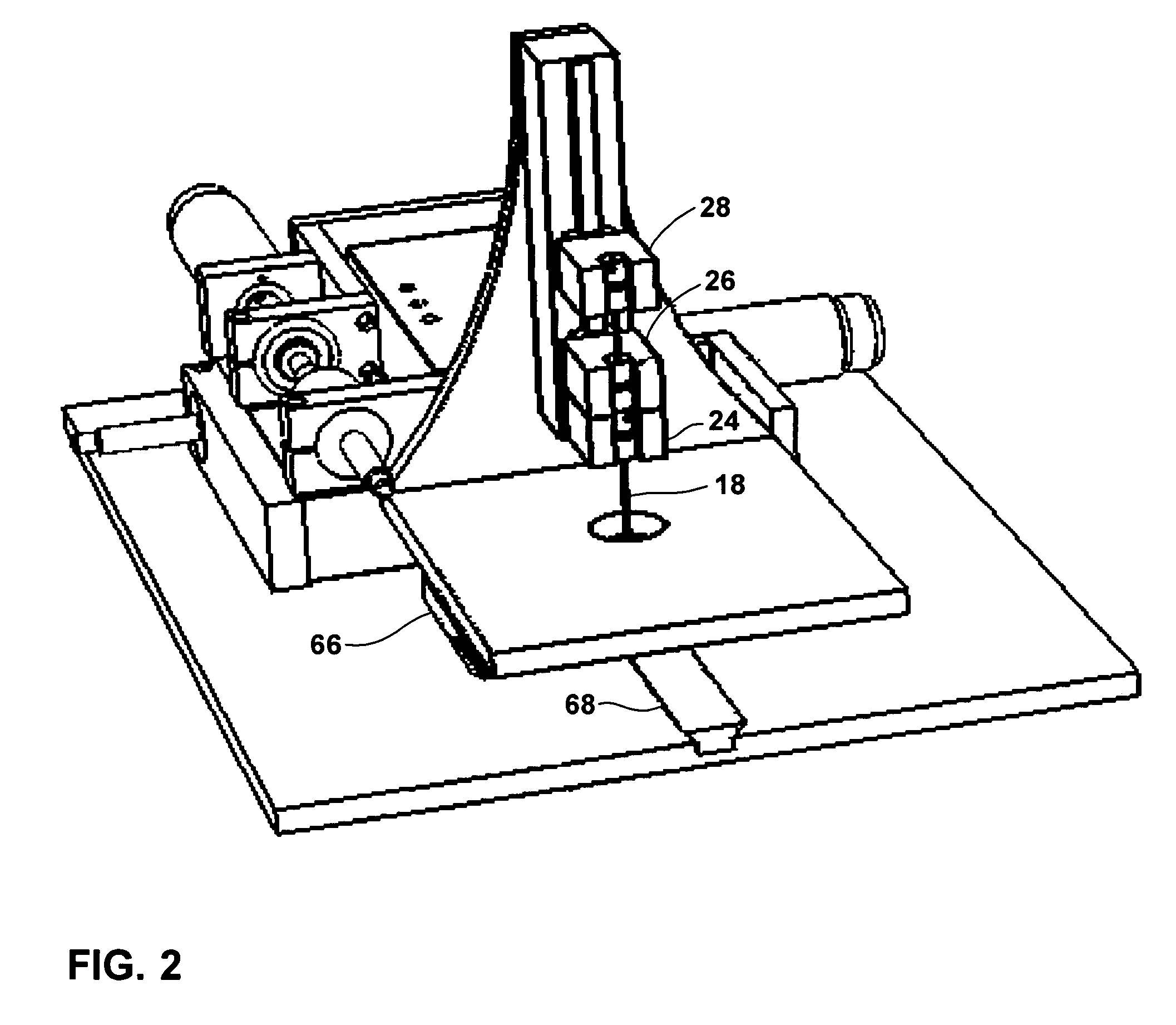Microarrayer with coaxial multiple punches
- Summary
- Abstract
- Description
- Claims
- Application Information
AI Technical Summary
Benefits of technology
Problems solved by technology
Method used
Image
Examples
first embodiment
[0039]FIG. 1 illustrates a first embodiment microarrayer 10 in accordance with the present invention. Microarrayer 10 constructs arrays of biological material from donor cores obtained from at least one donor block, placing the donor cores in an embedding medium carried by at least one recipient block. The recipient and donor blocks are supported on a fixed support platform 12 that defines an X-Y plane. Extending away from the support platform 12 in the Z-direction is a punch platform 14. Punch platform 14 is stationary with respect to support platform 12 in the Z-direction, but is movable relative to the support platform in the X and Y directions by a platform drive assembly 16. Drive 16 displaces the punch platform 14 in the X and Y directions to selectively position the platforms 12, 14 with respect to one another.
[0040] Mounted on the punch platform 14 is a donor punch 18, a recipient punch 20, and a stylus 22. Each of the punches 18, 20 and stylus 22 are movably mounted on the ...
second embodiment
[0062] In a second embodiment, drive assembly 16 can be under automatic control to automatically move and position the punch platform 14 to form the array of receptacles in a recipient block or to move between a donor block coring position to the next recipient block coring position.
[0063]FIG. 10 illustrates a second microarrayer 110 in accordance with the present invention. Microarrayer 110 is otherwise identical to microarrayer 10 but includes a computerized control system 112 having a user interface represented by a display screen 114 and operatively coupled to drive assembly 16 and drives 116, 118, and 120 that drive the donor punch slide, recipient punch slide, and the stylus slide respectively. Pneumatic, hydraulic, and electric slide drives are known and can be readily adapted for use in the present invention.
[0064] Control system 112 automatically controls the drives and motors and responds to user feedback received from a keypad, mouse, stylus, touch screen, or the like, a...
PUM
 Login to View More
Login to View More Abstract
Description
Claims
Application Information
 Login to View More
Login to View More - R&D
- Intellectual Property
- Life Sciences
- Materials
- Tech Scout
- Unparalleled Data Quality
- Higher Quality Content
- 60% Fewer Hallucinations
Browse by: Latest US Patents, China's latest patents, Technical Efficacy Thesaurus, Application Domain, Technology Topic, Popular Technical Reports.
© 2025 PatSnap. All rights reserved.Legal|Privacy policy|Modern Slavery Act Transparency Statement|Sitemap|About US| Contact US: help@patsnap.com



